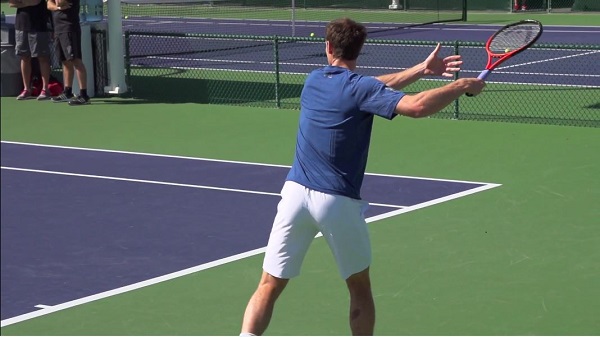As ZanderGoga mentioned you do not have the idea of
separation. Separation allows the powerful abdominal/trunk muscles to be better used for racket head speed. Your uppermost body (indicated by a line between your two shoulders) should move more independently compared to a line between your two hips because the stroke then involves the twisting muscles of your abdomen. The shoulders line and hips line when viewed from above would form the
separation angle. Your separation angle is too small.
Search Forum:
forehand separation Chas
for more illustrations, videos and discussion.
If you have had back injuries or issues you should consider that risk when you use more trunk twisting.
Djokovic is an excellent example of using separation. However, he is very flexible and his range of motion may be too much for many players.
To compare forehands in this post one above the other and single frame - single frame Youtube using the
period & comma keys. Always select the video by using the
alt key + left mouse click, otherwise the video starts playing. Pick two impacts and go to those frames, single frame backward and forward comparing the most similar racket positions. You can go full screen and come back down and the video stays on the same frame. Find more videos with more similar camera angles, forehand compilations or model forehands for comparison to your forehand. Make another video with a bigger image of your stroke. List all differences that you see.
This forehand is not a full out forehand and the separation is not as much as for a heavy paced put away shot. Avoid comparing videos of easy practice or warm up forehands.
Look especially at separation.


